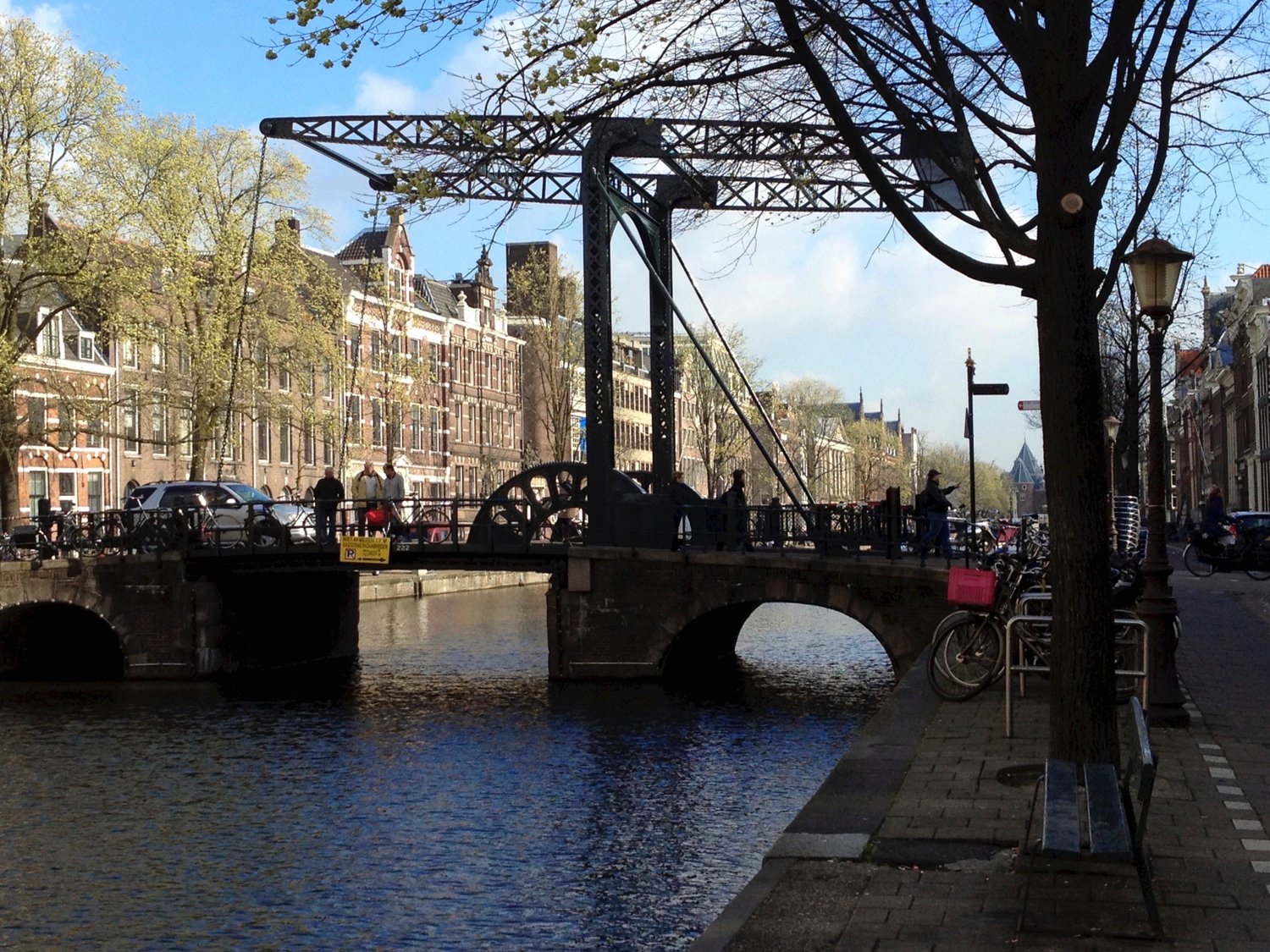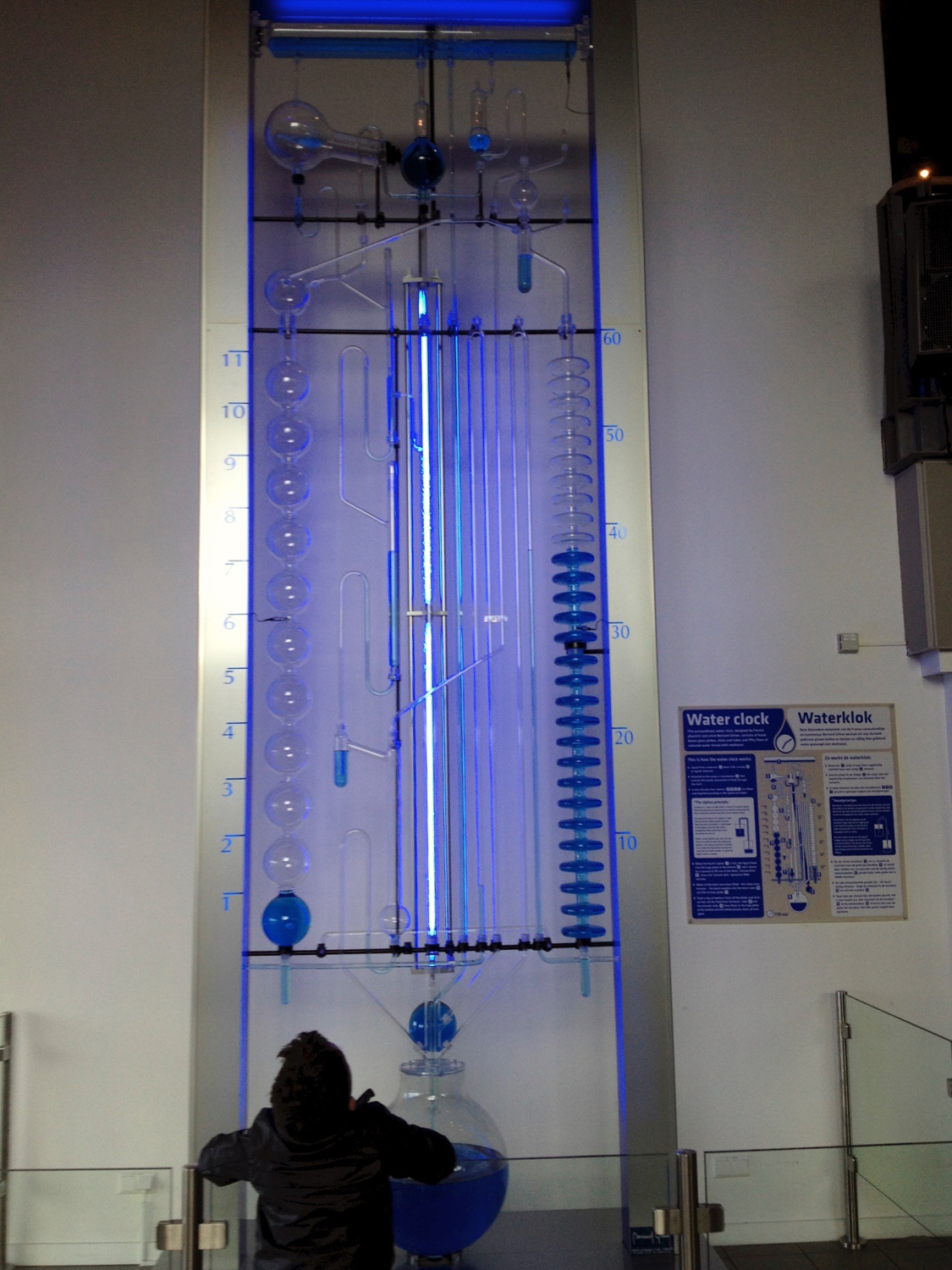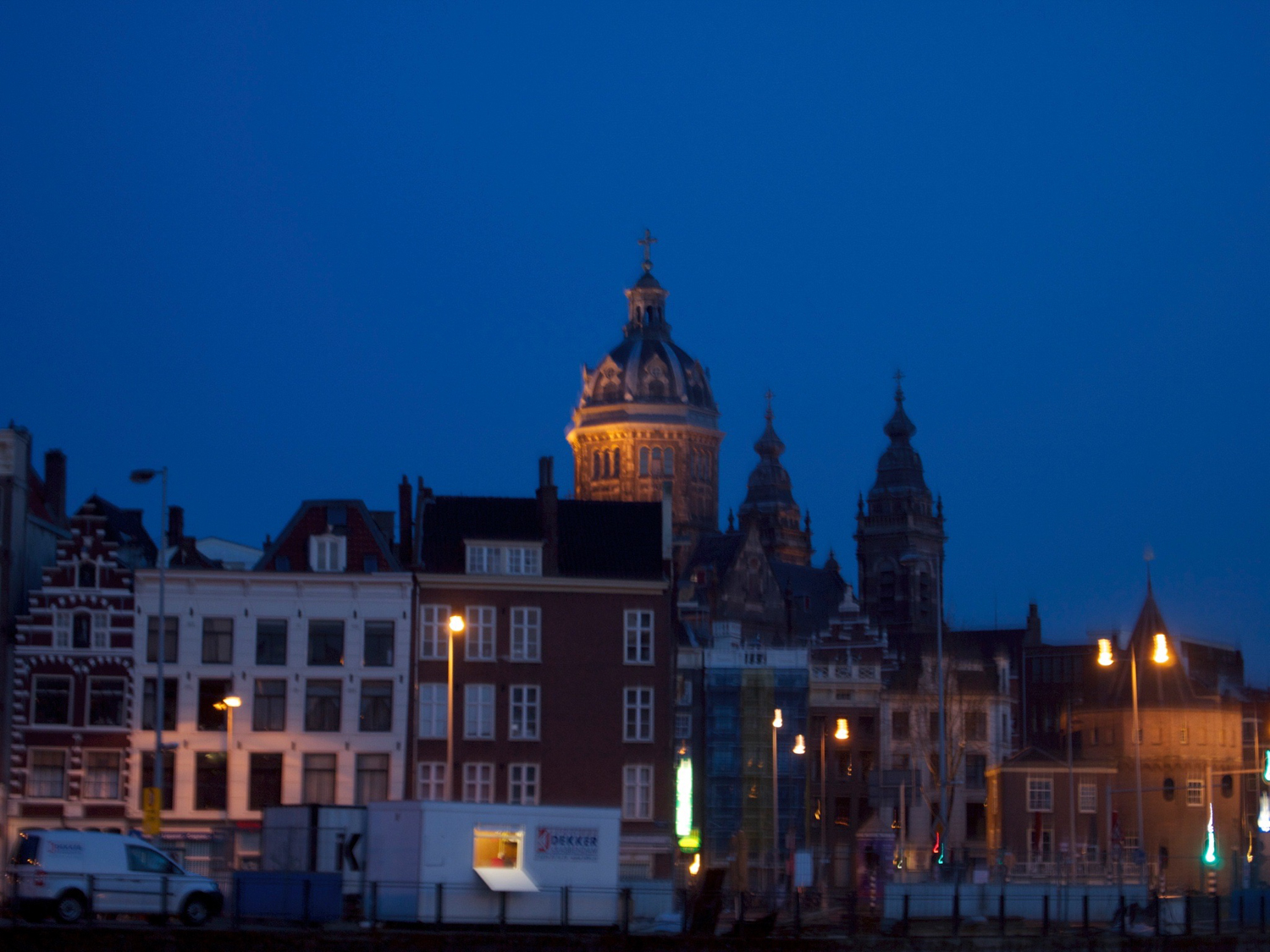Although we went on our first Mac Geek cruise to take advantage of the seminars, and to see exciting new ports, Wayne and I now love to come back to renew those friendships, of which we have made a few. First and foremost are Ivan and Sue Samuels, now retired from the optical career field, and enjoying travel. We had an initial drink with them last night, a little over 2 year since last meeting up at MacMania 11. Also in that group are now Don & Barb McAllister (who won’t be here), Wally & Wendy Cherwinski, Jacques Rizzi and Josimar King. It is always a pleasure to meet up and greet with them.
Of course, the travel ain’t half bad, and the classes are awesome!
I wanted to write a little about our hotel, the Amrath, before talking about the day. It is a fascinating building, and its view was impressive as we walked a half kilometer here from the central train station yesterday. It occupies what used to be the Shipping House, and is right on the Grand Canal, built between 1912 and 1916 by an impressive group of architects from the Amsterdam School. An office building, it sits on the very spot where Cornelis Houtman set out on the first voyage to East India in 1595, and is decorated with many symbols referring to the prosperous trade enjoyed. It is made of many different, beautiful types of bricks, stained glass, hardwood, and relief stone. Not to mention all of the granite. Its central stairwell, going up three floors, is spectacular, and surrounded (and covered) by stained glass windows and roof. The last shipping company left the Shipping House in 1981, and the building served as offices for the Municipal Transportation Company of Amsterdam. In 1997, the building was bought with the intention of establishing a five star hotel, in which it was successful.
Now on to the day!
We woke up early - 3 am - and couldn’t get back to sleep despite being exhausted, so Wayne checked on what time the Golden Hour was for sunrise. Turns out from 6:17 until 7:35 or so. So we washed up, read the news, sent emails, and waited to go out. And it was cold. 41 degrees. I teared my mascara off in the dry extreme cold. This little bunny wanted to run back into the hotel, but we continued on and got the opportunity to take some interesting shots. When we got back, my hands were so cold that they started to itch like there was poison ivy involved. Blech. From there we were off to a hearty breakfast in the hotel.
We set off this morning for the Anne Frank house, located outside of the central city. It took about 20 minutes to walk there, and when we got there, the line to get in was perhaps three blocks long. The Anne Frank House is located on the Prisengracht canal, dedicated to preserving the location where Anne and her family hid from the Nazis during WWII. The museum acts as an exhibition space to highlight all forms of persecution and discrimination, in addition to preserving the hiding space. Initially, after Anne’s diaries were published, visitors who wanted to see the secret rooms started coming to the house shortly after the book was published and many were informally shown around by the employees who had hidden the families. But by 1955 the company had moved to new premises and the entire block to which the building belonged was sold to a single estate agent who served a demolition order with the intention of building a factory on the space. A campaign to save the building and have it listed as a protected property was started by the Dutch paper Het Vrije Volk. Campaigners staged a protest outside the building on the day of demolition and the property received a stay of execution. The Anne Frank Foundation was set up by Otto Frank and Johannes Kleiman on 3 May 1957 with the primary aim of collecting enough funds to purchase and restore the building. In October of that year the company who owned it donated the building to the Foundation as a goodwill gesture. The collected funds were then used to purchase the house next door, Number 265, shortly before the remaining buildings on the block were pulled down as planned and the building was opened to the public in 1960. Over the years the building has had to be renovated to protect it from large visitor numbers, and as a result it closed temporarily in 1970 and in 1999. On 28 September 1999, Queen Beatrix of the Netherlands reopened the museum, which now incorporates the entire building between exhibition spaces, a bookshop, and a cafe, and featured the offices in the front house reconstructed to their state in the 1940s. A very moving museum, you see where an entire family remained hidden for a long time due to the beneficence of kind neighbors. The space in which the Frank family remained is unbelievably cramped, and the fact that Anne retained any positive outlook on life was amazing.
After this excursion, we walked to the “floating” flower market, which has been in place for the last 200 years. We saw some amusing and beautiful plant bulbs and seeds for sale. Watch it Dad & Pam, you may be getting some bulbs soon...one thing I noticed during our walking this morning is the complete deference that is shown not to pedestrians, but to the bicyclists. Cars and trucks don’t stop for pedestrians, and the bicyclists apparently curse at the pedestrians who get in their way. For a city with as many two wheelers as Amsterdam (which doesn’t even rate on the scale of Beijing), it makes for a disconcerting walk.
After the morning walk, we wound up at CHIN (short for Chinese Indonesian) Sea Village floating restaurant for dim sum lunch. By that time we had racked up about 6 miles walking, and enjoyed sitting down to the meal. The number of houseboats of different styles became a topic of conversation, with discussions of how one might need to live in a boat while trading down along the canals and rivers of Europe. Waste management and boat upkeep (of which there looked like there was none) is also a curiosity.
Following lunch we went to Nemo, a science center The museum has its origins in 1923, and is housed in a building designed by Renzo Piano since 1997. It contains five floors of hands-on science exhibitions and is the largest science center in the Netherlands. The floors are divided by concept and age. The main concepts on the first floor are DNA and chain reactions which include a room with giant dominoes with contraptions like a giant bell and a flying car. Also on the first floor is a show on the half-hour, which features a large chain reaction circuit. On the second floor is a ball factory where small plastic balls are sent on a circuit where participants are to group them in weight, size and color and then send them to a packing facility where the balls go into a small metal box. There are five stations at which the people stick magnetic barcodes on the boxes and send them off to start the circuit again. On the second level there is also a small cafeteria and a movie and performance hall where various acts and movies about science are shown. The second floor also features a display on the water cycle a display on electricity and a display on metals and buildings. This floor targets younger children. The third floor, starting to gear towards adolescents, has a giant science lab in which people can do science experiments such as testing vitamin C in certain substances and looking at DNA. On the fourth floor, for teens, is a section about the human mind, it has such experiments as memory tests, mind problems and sense testers. There is also a section geared towards learning about your body as a teen, and about sexuality. One section is called “peep show,” and it was crammed with adolescents looking at sex ed tapes. There was also a wall of dolls in various, um, positions. Only in Amsterdam.
Dinner (after a nap) was with Sue and Ivan at a wonderful Indian restaurant, Ganesha. If ever you are in Amsterdam, and crave Indian, go there.
Tomorrow to Keukenhof Gardens, and then set sail. Welterusten allemaal!



